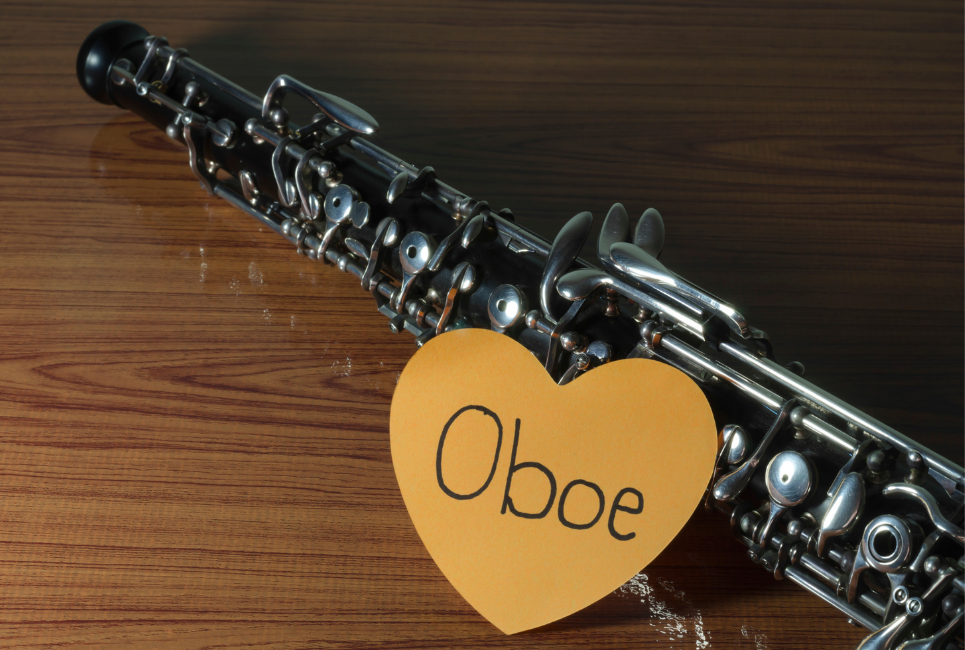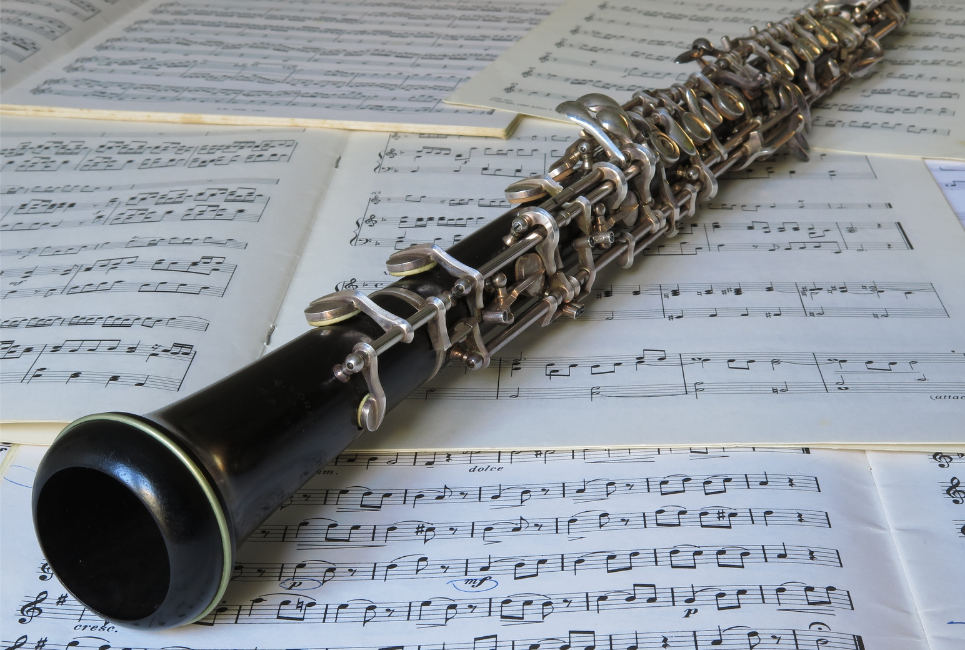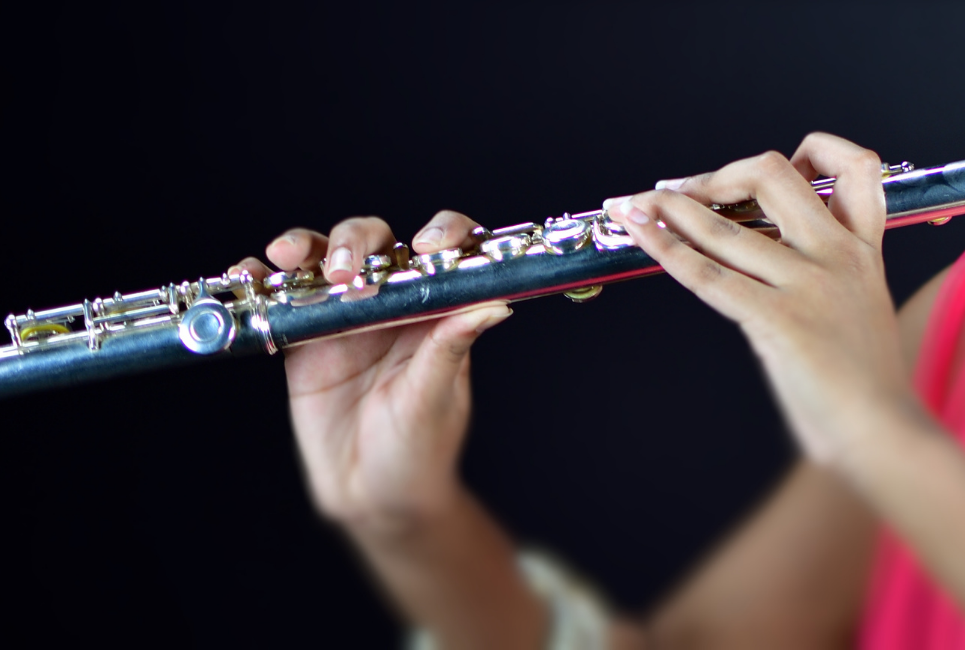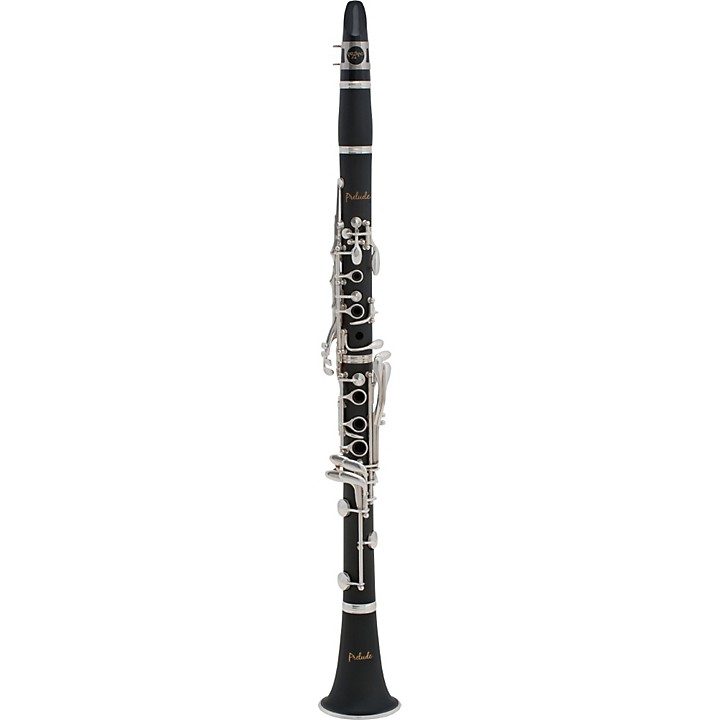- Oboe vs Clarinet Compared: What Are Their Differences? - June 6, 2022
- Sousaphone vs Tuba Explained: What Is The Difference? - July 28, 2021
- Best Clarinet Cases You’ll Love - July 13, 2021
At first glance, a clarinet and an oboe look similar, but a quick listen will reveal that they sound very different. A well-played clarinet has a velvety, licorice-tinted tone that purrs on the low end and sparkles on the high. The reedy sound of an oboe is equally unmistakable but was compared by Tony Kushner in Angels in America to “a duck if a duck were a songbird.”
The clarinet is the first instrument I ever abused. My first efforts at oboe failed to produce any sound, which was arguably an improvement over my clarinet playing. But I am a longtime music scholar with an enormous collection of works spanning many genres. I enjoy woodwinds of all different types, and clarinets and oboes are two of my favorites.
Bottom line up front: While the clarinet is a good instrument for beginners, the oboe is a more complicated woodwind that is better for older students with prior woodwind experience.

The Main Differences Between Oboe and Clarinet
Although the oboe and clarinet seem almost identical at first glance, there are a number of major differences that distinguish each instrument’s sound, operation, and place in musical ensembles.
The main differences between oboes and clarinets are:
- Oboes use double reeds, whereas clarinets use a single reed
- Oboes have a more sharp and crisp tone, whereas clarinets have a more rounded intonation
- The clarinet has a cylindrical bore, whereas the oboe has a conical bore
- The clarinet is one of the easiest instruments for a beginning musician, whereas the oboe is one of the most difficult
- The clarinet has a flared bell, whereas the oboe has a rounded bel
To find out which instrument is right for you, let’s start at the top and work our way down.

Reed Type
This is the biggest difference between the oboe and the clarinet. They are both parts of the reed subgenre of the wind instrument family. Their sound comes from the player blowing past a thin piece of wood that vibrates into the instrument’s body and changes depending on which openings are activated along that tube.
However, the clarinet uses a single reed that is typically carved from cane (Arundo donax). This is one layer flattened and secured against the open part of the mouthpiece. The player then tucks their bottom lip over their teeth to blow into the mouthpiece and uses their tongue to stop the airflow between the tip of the reed and the mouthpiece as needed.
Clarinet reeds come with hardness ratings ranging from 1 to 5, depending on the stiffness of the material used. Harder reeds provide more resistance and make it easier for the clarinetist to find the tone center, but beginning clarinetists will find them more challenging to play. Softer reeds provide less resistance, which makes them easier for new students but gives advanced players less control and feedback.
Oboes, on the other hand, require what are called double reeds. These are not just two clarinet-type reeds but rather their own unique style. A cane tube is split lengthwise, gouged to thickness, and then cut to shape. It is then folded in half to form the oboe reed’s blades, then fastened to a metal tube surrounded by cork. This forms a small open cone. Oboe reeds are also ranked by hardness.
Double reeds come in a variety of stages of completion, and many professional oboe players prefer to make their own for personal intonation and playability adjustments (in contrast to clarinetists, who generally buy their ready-made because there is much less variety in shape and tone with single reeds). Synthetic reeds are available for stronger durability, but most professional oboists prefer naturally-made reeds for their more subtle tone capabilities.
Players achieve sound on an oboe by tucking both sets of lips over their teeth and blowing into the double reed’s opening. Since this type of reed basically acts as the instrument’s entire mouthpiece, oboe players use much more micro-control of their mouth muscles to produce the notes and intonations they want than single reed players do. This means oboe players usually take longer to master the embouchure control needed to produce clear playing.
The structure and usage of double reeds also make them more fragile. New ones need to be soaked in water to soften the reeds before playing, and their general storage must be more enclosed than single reeds, which means each double-reed takes up more space than single ones. They are also more expensive than single reeds.
Vandoren has been making instrument reeds since 1905 and is widely considered the world’s leading reed company. Vandoren makes reeds for clarinets and oboes with different hardness ratings and sizes. But you can also buy Vandoren reeds for saxophones, bassoons, and even for uncommon instruments like contrabassoons or sarrusophones.
Since many oboe players prefer making their own reeds, Vandoren also sells selected cane pieces you can whittle yourself. Vandoren reeds cost a bit more than generic instrument reeds, but the difference in price is modest, while the reed quality is vastly superior.
Mouthpieces
Clarinet reeds are attached to a mouthpiece that can be made of many different substances. Plastic is most commonly used for student mouthpieces, whereas advanced and professional mouthpieces are typically made of hard rubber. The clarinet’s reed is held against the mouthpiece by a ligature. Most clarinetists use a metal band that tightens with screws, but period clarinetists playing historical instruments will often hold their reed in place with string.
The oboe’s reed is inserted directly into the reed socket at the top of the oboe body. Oboists put the reed in their mouths and blow through it to create the vibration. The embouchure (mouth, jaw, and lip position) for an oboe is more difficult than for a clarinet. This is the first of several things that make the oboe a more challenging instrument than the oboe.
Different materials and mouthpiece lengths can give your clarinet a dramatically different sound. If you are not entirely satisfied with the sound of your current clarinet, a new mouthpiece is a reasonably-priced way to improve your old instrument without replacing it.
Yamaha makes excellent clarinet mouthpieces for students and more advanced clarinetists. Yamaha is one of the world’s largest instrument makers and distributors, and Yamaha instruments are highly regarded for their durability and quality control. A new Yamaha mouthpiece may work wonders on your current clarinet.
Body
Both professional clarinets and oboes are most frequently made with grenadilla or African blackwood. Student clarinets and oboes are most often made of hard polymer resin. While resin is much cheaper and easier to work with than grenadilla, musicians have generally felt that resin instruments offered an inferior tone. But as polymer chemistry has advanced, today, more high-end instrument makers are using synthetic materials to build their professional clarinets and oboes.
Not only do these instruments sound as good as wood-made instruments. Resin clarinets and oboes do not damage old-growth grenadilla trees. Because resin is not as sensitive to temperature and humidity changes as wood, resin oboes and clarinets are less prone to cracking or to going out of tune in hot or humid environments.
Both oboes and clarinets have an upper and lower joint that lets musicians carry them in a smaller case. But the clarinet has a “barrel” joint between the mouthpiece and the first joint. The mouthpiece screws into the barrel, and the clarinetist can fine-tune the instrument’s pitch by loosening or tightening the barrel’s connection to either or both ends. Oboe players must rely on their embouchure to correct any intonation issues.
Yet despite these similarities, there is one big difference between the bodies of a clarinet and an oboe. The clarinet has a cylindrical bore that stays consistent throughout the length of the body. The oboe has a conical bore which is smaller at the top of the body and grows wider as you go down the body. In the case of an oboe, things get very narrow indeed. The reed socket that holds the reed in place is just 4 mm (0.157 in) in diameter.
The clarinet’s cylindrical bore gives it nearly an extra octave on the bottom, while the oboe’s conical bore changes the resonances and harmonics to give the oboe its distinctive reedy sound. But the narrow top bore makes proper breathing for the oboe more challenging than playing a clarinet.
You must blow a small bit of air through the oboe, and oboists generally find themselves needing to exhale rather than inhale. The oboist is blowing that small amount of air through an instrument that offers much more resistance. You will frequently see oboists becoming red-faced when they play loud passages.
If you’re looking for a first clarinet, the Conn-Selmer CL711 Prelude is an excellent choice. Conn-Selmer has been making student musical instruments for generations, and the CL711 is a durable instrument that will provide your student with a solid foundation and comes with everything you need to get started except reeds.
If you are looking for an oboe for a very young student, you are probably better off renting one. Oboes for very young students lack some of the keys needed to play the standard oboe repertoire and will only be useful for the first year or two of performing. Given the high cost of oboes, it’s better to see how your student does on a trial instrument.
Bell
On brass instruments, the bell acts like a megaphone and amplifies the sound. In woodwinds like clarinets and oboes, much of the sound comes through the open tone holes, and the bell is not needed for that job. But as with brass instruments, the bell strengthens the lower registers and helps with intonation issues.
Because the clarinet has a deeper lower register than the oboe, its bell must be more flared to bring its bottom notes better into tune. Clarinets have a detachable bell, while an oboe’s bell is part of the lower joint.
Buffet Crampon has been making musical instruments since 1824, and Auguste Buffet helped design the Boehm clarinet with Hyacinth Klosé. While BC makes instruments at all levels, their professional line of woodwinds is especially sought-after. The Buffet Crampon Divine Professional B♭ Clarinet adds technological advances like carbon wiring and a new bore to make the Divine the finest clarinet modern science and instrument-making tradition can produce.
The enormous price gap between student clarinets and oboes becomes much more narrow when we start looking at professional instruments. At nearly $11,000, the Buffet Crampon Orfeo Professional Oboe is about $1,500 more than their TOTL clarinet. But like the Divine, the Orfeo is made with select grenadilla wood and BC’s patented Green Line tone hole protection that helps resist cracking and air leaks.
Intonation
The tiny structural adjustments between the clarinet and the oboe account for sounds that are very distinct from each other. This becomes the most obvious difference between the two instruments as soon as they’re played.
Tone differences come from what’s called the bore, or the open space inside the instruments’ bodies. A clarinet’s overall cylindrical shape means that the sound waves produced inside carry odd harmonics. This means that a played note echoes with frequencies of notes in intervals of thirds, fifths, and sevenths, among others. As mentioned above, the flared bell at the bottom of a clarinet helps produce lower register notes; it also sometimes adds even harmonics, depending on the note. All of this combines to give the clarinet a mellow tone over its wide range.
The oboe’s bore is conical, with about a two-degree slant on each side. This, plus its flatter bell, produces all odd and even harmonics that combine for its distinct sharp sounds. Players can manipulate these harmonic combinations through fingering and embouchure adjustments. The oboe has a similar note range to the clarinet, but the physics of its structural differences create a sound unique from the other instrument.

Key Systems
Like modern recorders, the earliest ancestors of the clarinet and oboe had finger holes that the musician opened and closed to change notes. By closing those holes with their fingertips, they could play a scale, and by opening the thumb hole in the back, they could play a second octave. But these instruments could not play a chromatic scale, so the chalumeau (clarinet) or shawm (oboe) player needed to carry instruments in different sizes and pitches for different songs.
Then, in 1847, German flautist Theobald Boehm perfected a keyed flute that could play a complete chromatic scale. Boehm’s flute had more holes than a standard flue, but many were covered and opened only when the flutist pressed a key. French clarinetist Hyacinthe Klosé adapted Boehm’s key system to the clarinet. Today that system, with a few minor modifications, is used by clarinetists worldwide.
The oboe keying system Charles Louis Triébert introduced in 1855 was also inspired by Boehm’s design. Because Triébert was also a professional oboist who taught at the Paris Conservatory, his design is known as a conservatoire oboe. But while a modern Boehm clarinet has 16 keys, a modern full conservatoire oboe has 45 keys!
While Boehm’s clarinet largely eliminated the need for complicated fork fingerings, a conservatoire oboe does not. On many notes, an oboist must raise a finger to lower the pitch or close a key to raise it.
Key Construction
Both the oboe and the clarinet have a metal system of buttons and levers attached to their instrument bodies that players press in specific combinations to alternate their airflow and therefore change the notes that come out. This is another detail that seems very similar on both instruments until you take a closer look.
The clarinet starts with a straight line of open holes, called tone holes, going down its body from the barrel to the bell. These tone holes are rimmed with metal circles that are attached to each other, and the player’s fingers must cover the entirety of whatever tone hole combination makes up the note they are going for, or the sound will be off. For the most part, the clarinet player linearly progresses through the notes, getting one note lower down the scale with each successive tone hole that is covered.
There are metal levers between some of the tone holes and at other places on the instrument for players to press to make a note sharp or flat, a bit like the black keys between the white ones on a piano. There are also a few levers and extra tone holes that clarinet players use to take their notes up or down an octave, although a lot of that shift requires embouchure manipulation in tandem.
The oboe, however, boasts a much more intricate system. Its tone holes have covers that the player depresses onto them individually as they change notes, and although the basic idea of note progression is similar to the clarinet’s, the oboe packs a lot more extra hardware for players to manipulate at once.
This complicated fingering system comes from compensating for the oboe’s natural timbre. It’s prized for its uniqueness, but it also means that the oboe is limited in its range without any manual adjustments. As oboes grew from their double-reed pipe beginnings, composers in the baroque and classical periods wrote an increasing number of parts that required oboe players to figure out how to hit more and more notes. (J.S. Bach was especially prolific with his oboe solos.)
This resulted in the modern standardized version of the key system, which still requires intricate and counterintuitive fingerings that can be difficult for beginners to get under their belts. Learning how to go from note to note on an oboe takes more time than the clarinet, and new oboists must be patient when it seems like their fellow orchestra members are progressing faster than they are.

Orchestral Tuning Role
Traditionally, the entire orchestra is tuned to an oboe’s A. This stems from the development of equal temperament tuning, which is the modern Western tuning system of dividing each octave of soundwaves into twelve evenly-spaced intervals (rather than relying on acoustically pure intervals, which are more finicky to calculate).
Oboes became the standard tuning instrument for this because their reed construction plays a large part in staying in tune, and this is more stable than relying on, for instance, string tension or pure embouchure adjustment as other instruments require.
The note A is used because all string instruments have an open A, which can be tuned to a perfect match with each other without worrying about minute finger placement variations.
The use of the oboe for orchestral tuning rather than the clarinet is simply because the oboe became a regular part of symphony orchestras before the clarinet did. Because of this, the first oboist in an orchestra is the section leader of the woodwinds, although few woodwind sections go without at least a standard B flat clarinet nowadays.

FAQs
Answer: The oboe and the clarinet are both wind instruments that require players to blow across reeds to create sound, putting them both in the woodwinds section. They are both similarly (although not identically) shaped and come from reed pipe ancestors. However, clarinets branch off towards the single reeds, such as saxophones, and oboes go with their fellow double reeds, such as bassoons.
Answer: Not automatically. These two instruments each have their own unique skills and techniques, so mastering one does not mean you can jump over to the other with no adjustment. However, learning the clarinet is sometimes advised as a beginning point for those who eventually want to learn how to play the oboe. It’s a simpler way of learning general reed-based woodwind playing — but it’s also not the exact equivalent of playing the oboe, so switching takes some re-learning of certain techniques.
Answer: The clarinet and oboe have very similar note ranges, and they are both heavily featured in woodwind section music in orchestral environments. Because of its sharper, more unique sound, oboe music may feature more solo spotlights. This is especially true of Classical-era music, which saw a flourish in oboe composition, a lot of it from Bach.
Clarinets show up a lot in jazz music because of their smoother sound. Many jazz clarinet players take off on an improvised solo, then blend seamlessly back into the group for the rest of the song.
Since they are tuned in the same range, clarinets and oboes can share sheet music, although they usually have different parts that showcase each instrument’s individual strengths.
Answer: In the 19th century, French and German oboe designers produced very different instruments. The German oboe was shorter with a wider bore and a different keying system. It was praised for its tone across registers but fell out of fashion as the French oboe (known as the “Conservatoire” design). Only in Vienna did orchestras continue using the German design, which we now call a “Wiener Oboe” or “Viennese Oboe.”
Though Viennese oboes remain scarce outside of Austria, many period oboists use them when playing 18th and 19th-Century pieces. The Viennese oboe sounds more like Mozart-era oboes but has the advantage of a modern keying system that makes playing challenging passages easier.
Answer: The most commonly used clarinet is the clarinet in B♭. The clarinet is a transposing instrument that sounds a full step lower than the notes written on the page. Clarinets in E♭, which use the same fingerings as the B♭ clarinet, sound a minor third higher than the written note. You may occasionally see clarinets in A, which also use the same fingerings but play two full steps below the sheet music.
Answer: The oboe is pitched in C, and sounds notes as they are written. The oboe d’amore, popular in Baroque and 18th-century music, is in the key of A and plays a minor third below the notes. The cor d’Anglais, or English horn, is pitched in F and plays a perfect fifth below the written score.
Bonus Instrument: Meet the Duduk
If you are trying to decide which of these two instruments to learn, we recommend starting with the clarinet. Its single-reed makes for simpler embouchure control and overall reed care, so if you’re new to these instruments, it’s a faster start and a more shallow learning curve than the oboe.
It can be very difficult to get a sound out of an oboe if you come into it without experience playing a reed instrument, which can discourage your practice before you can start playing actual music!
(For this reason, many school bands begin players on the clarinet and migrate them to the oboe after they’ve mastered a certain level of basic reed skill. Clarinets are also used in marching bands, while oboes are not, so you may be using one in the non-orchestral part of the year if your ensemble switches over.)
Our favorite basic clarinet model is the Jean Paul USA CL-300 Student Clarinet. It’s an accessible price (around $199.99) without compromising on quality, and you can find it here on Amazon.
Combining an elegant ebonite body with nickel keys, The Jean Paul USA CL-300 clarinet boasts beautiful design and sound while maintaining a low price point.








